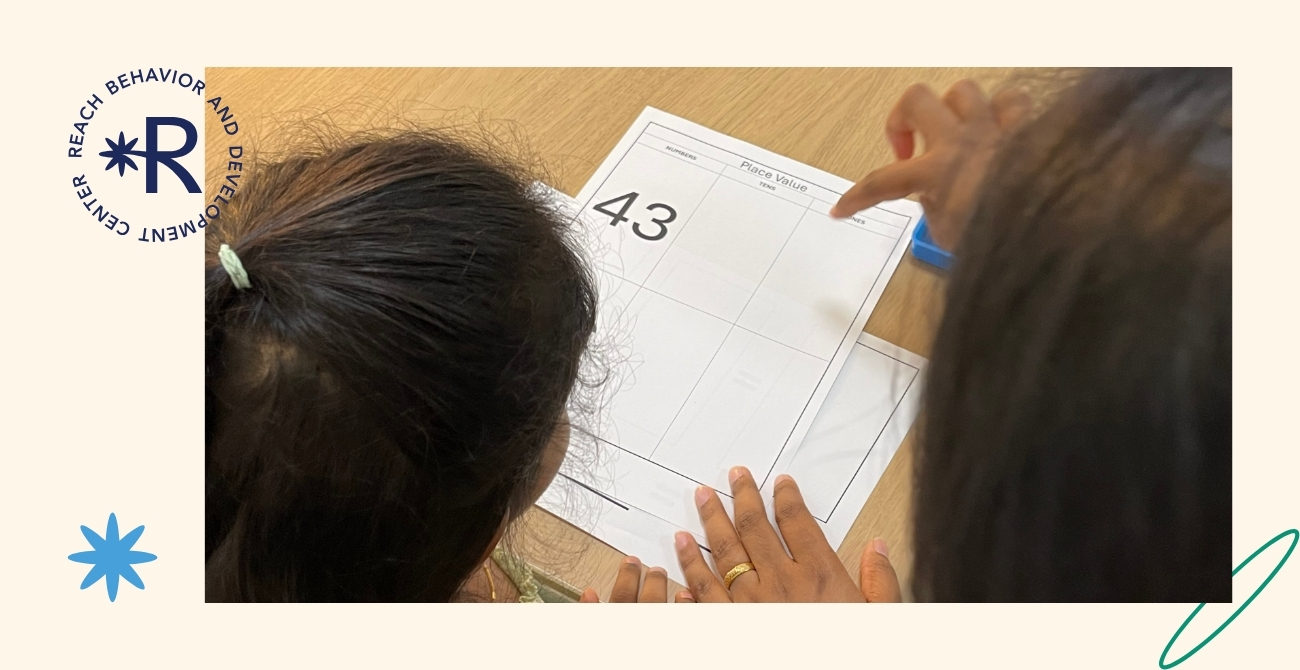
Cultivating an Attitude of Gratitude: An ABA Perspective
As the season changes and we prepare for the winter season, November naturally turns our minds toward themes of thankfulness and gratitude. While saying “thank you” is an important social skill, at Reach, we believe in going deeper. What if we could cultivate a genuine, lasting attitude of gratitude?
Gratitude isn’t just a feeling; it’s a behavior. And because it’s a behavior, the principles of Applied Behavior Analysis (ABA) can provide us with a powerful framework to teach, nurture, and strengthen it in both ourselves and our children.
Why Gratitude Matters: More Than Just Manners
Research consistently shows that practicing gratitude has profound benefits. It can:
- Improve mental and physical health
- Enhance empathy and reduce aggression
- Build stronger relationships
- Increase resilience and overall happiness
For our children, especially those navigating social and communication challenges, understanding and expressing gratitude is a key component of building meaningful connections with the world around them.
An ABA Approach to Building Gratitude
ABA focuses on understanding how behavior is influenced by the environment. We can use this knowledge to create an environment where gratitude is modeled, prompted, and reinforced, making it a more likely and natural part of daily life.
Here are 4 ways to incorporate an ABA approach to thankfulness:
- Be a Specific Model of Gratitude
Children learn a great deal through observation. Instead of a general “I’m thankful for my family,” try modeling specific “thank yous” that highlight the effort or impact of an action.
- Instead of: “Thanks for helping.”
- Try: “Thank you for putting your plate in the dishwasher. That was so helpful and saved me time.”
- Instead of: “I love this drawing.”
- Try: “Thank you for drawing this picture for me. I can see you worked really hard on choosing all these colors. It makes me feel so happy.”
This “Behavioral Specific Praise” not only models gratitude but also reinforces the specific positive behavior you want to see again.
- Create a Visual Gratitude Ritual
Visual supports are a cornerstone of ABA because they make abstract concepts concrete. A gratitude ritual provides a consistent opportunity to practice the behavior.
- The Gratitude Jar: Place a jar and some slips of paper in a common area. Each day, encourage every family member to write or draw one thing they are grateful for and drop it in the jar. Read them together on Thanksgiving or at the end of the month.
- The Thankfulness Tree: Cut out a bare tree from brown paper and attach it to a wall. Each day, add a “leaf” (a paper cut-out) with a word or picture of something you’re thankful for. Watch the tree fill with color throughout the month!
These rituals provide a visual prompt, create a shared family activity, and offer a tangible record of all the good things in your lives.
- Use Shaping to Teach Thankfulness
For a child who finds it difficult to express gratitude, we can use “shaping”—reinforcing successive approximations toward the goal behavior.
- Step 1: Reinforce any positive reaction when receiving something (e.g., a smile, taking the item gently).
- Step 2: Reinforce a vocalization or attempt at “ta” or “thank you.”
- Step 3: Reinforce a clear “thank you.”
- Step 4: Reinforce an unprompted “thank you” or a “thank you” that includes the person’s name or the item.
The key is to meet your child where they are and celebrate each small step forward.
- Pair Gratitude with Natural Reinforcement
The goal is for the act of expressing gratitude to become intrinsically reinforcing. To build up to that, we can pair the behavior with a natural, positive consequence.
- When your child says “thank you” for a snack, they not only get the snack (the initial reinforcer) but also receive a warm smile, a “you’re so welcome!” or a hug. This social connection pairs a positive experience with the act of thanking.
- Encourage gratitude beyond material things. “Thank you for that great joke, you made me laugh!” This links gratitude to shared joy and interaction.
Gratitude is a Journey, Not a Destination
Building a true spirit of thankfulness takes time and practice. It’s about creating a pattern of noticing and appreciating the positive people, moments, and things in our lives.
This November, we encourage you to try one of these strategies. Notice the small shifts. The more we practice and reinforce gratitude, the more it blossoms.

